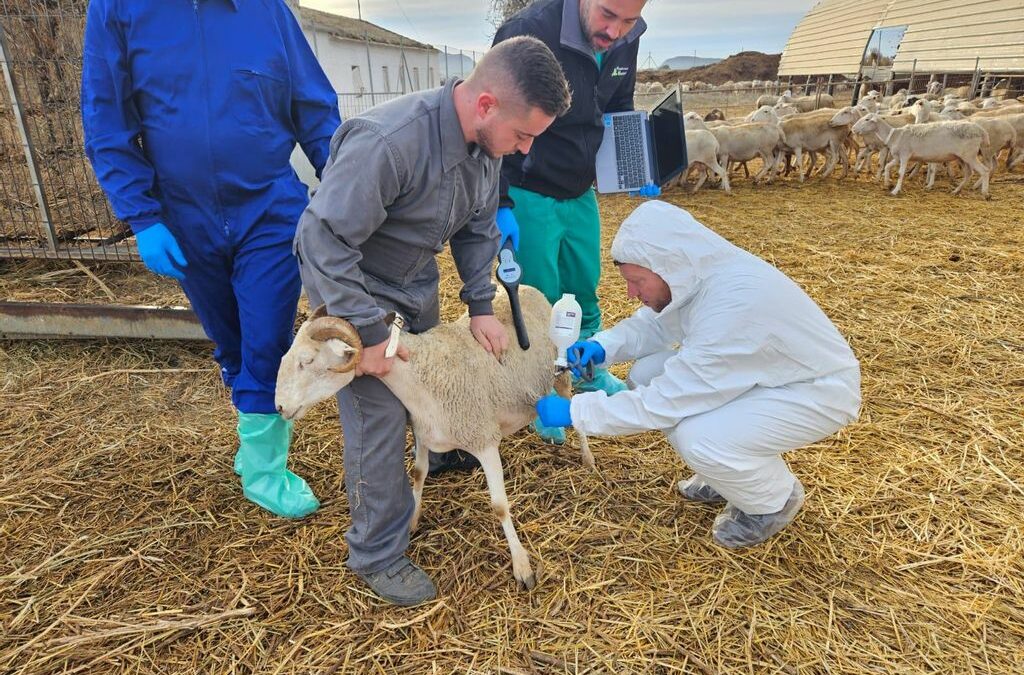Steve Jackson, Head of Animal Disease Policy at the Welsh Government, outlined the latest on Bluetongue disease in Wales during a recent AHDB webinar.
According to Jackson, in Wales the vet figures show up to 212,000 animals vaccinated against Bluetongue (136,000 cattle and 73,000 sheep, with approx. 300 odd camelids and approaching 2,000 goats). He also added that there is some concern regarding the figures.
In reference to the 212,000 number, he said that vets reported this number but in comparison, keepers reported the vaccination of 127,000 animals.
Reporting discrepancies
“So there’s a bit of an anomaly there between vet reports and keeper reports. And that’s slightly concerning to us because our plans for relaxing movement restrictions for vaccinated animals really relies on keepers reporting vaccination of animals.
We need to think about anything we can do to encourage keepers to report vaccination numbers as timely as possible.”
Low vaccination levels
Jackson further highlighted that 212,000 is a low number – “that’s pretty low and means basically the majority of livestock in Wales are not protected against the clinical impacts of the disease.”
Movement restrictions introduced
Movement restrictions were introduced to livestock in June and July to protect the health and welfare of Welsh livestock. Movement of livestock from England into Wales has been restricted in recent weeks, with new cases of the disease subsequently found near the border in Herefordshire. He further noted that the Welsh Government will continue to review the Bluetongue policy and keep an eye on the evolving disease.
Future movement
Animal movement restrictions are a powerful tool in preventing the disease moving into Wales. “That’s not to say midges couldn’t come across the border [from England] so the industry acknowledges that there’s a very high risk of disease.
To try and mitigate the impact of the disease the Welsh government says vaccination is key to unlock animal movements, the stipulation should be vaccinated animals.
I think it’s fair to say then we expect to get Bluetongue. So how would we deal with it? ” — Steve Jackson, Head of Animal Disease Policy, Welsh Government
Policy adjustments ahead
“We will introduce a wider range of relaxations as we approach the onset of the no transmission period where all fully vaccinated animals will be able to move to Wales to live,” Jackson stated.
According to the Welsh government, from midday 21 September 2025, some movement restrictions will be eased for all animals vaccinated against Bluetongue Virus Serotype 3 (BTV-3) moving from the restricted zone into Wales. Based on current scientific evidence and expert advice, temperatures in Wales are expected to be low enough by this time to reduce virus transmission by midges.
It is required to have a specific movement licence before moving non-vaccinated animals from a bluetongue restricted zone to Wales.
The government adds that animals that have completed a primary vaccination scheme of a Bluetongue virus serotype 3 vaccination as per the information datasheet and show no signs of illness, can move from the restricted zone (RZ) in England to Wales without a pre-movement test, under the conditions of the general licence.
Preparedness and eradication strategy
“I think it’s fair to say then we expect to get Bluetongue. So how would we deal with it? And the answer to that is we would aim to eradicate it in the first instance. The strategy may vary depending on the location of where we find the disease,” Jackson said.
Since 1 July the whole of England was classed as a restricted zone for bluetongue. Bluetongue Virus-3 (BTV-3) is currently active in Great Britain.

